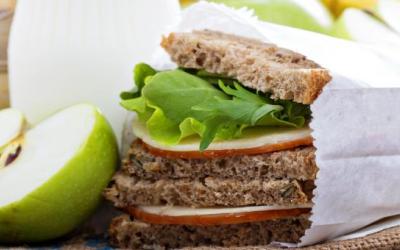Research into pheasant microflora opens up prospects for developing new probiotics in poultry farming

Modern poultry farming strives to reduce the use of antibiotics , improve productivity, and strengthen animal immunity . In this context, probiotics containing beneficialBacteria play a vital role in restoring the imbalance of microflora. Scientists have isolated key strains from pheasant intestines that can be used to develop probiotics aimed at suppressing pathogenic microflora.
Research has shown that the intestinal microflora of pheasants is characterized by a significant diversity of symbiotic bacteria. Scientists from the Timiryazev State Agrarian University of RUSSIA and the Trubilin Kuban State Agrarian University conducted a metagenomic analysis of beneficial bacterial populations living in the caeca of two species of domestic pheasants: the Romanian and Caucasian.
Analysis revealed that bacteria from the order Pseudomonadales predominate in Caucasian pheasants (93%), while their share in Romanian pheasants was 55%. The researchers also discovered lactobacilli important for the production of probiotics: Lactobacillus coryniformis, Lactobacillus johnsonii, and Lactobacillus reuteri. They identified the genes of these lactobacilli responsible for the synthesis of bacteriocins, which suppress the growth of pathogenic bacteria without the risk of developing resistance.
This study provides a deeper understanding of the intestinal microflora of pheasants and opens the door to the isolation of pure lactobacilli cultures that could be used as probiotics to support the HEALTH of farm animals. The scientists' future plans include studying the safety of the isolated cultures and developing effective microbial formulations for use in poultry farming.
Read together with it:
- An HSE expert reported on the "evolution of inequality" in access to healthcare.An HSE researcher analyzed Russians' access to healthcare over a ten-year period. In 2021, the influence of financial factors became noticeable for the first time: low income reduces the likelihood of visiting a DOCTOR.Over the ten years from 2011 to 2021, the number of Russians requiring medical care but not receiving it remained virtually unchanged, according to a study by Lyudmila Zasimova, hea...
- Rosselkhoznadzor has banned meat imports from two Belarusian enterprises due to violations.In addition, three other Belarusian producers are now subject to strict laboratory monitoring due to initial deviations: azithromycin was found in poultry MEAT from Druzhba Poultry Farm, and the pesticide imidacloprid was found in honey from Pchalyar Polachchyny Farm. Powdered MILK from Luninetsky Dairy Plant was also found to containcoli bacteria . These measures were taken at the request of the ...
- Pharmaceutical companies see a threat to EU security due to bacteria in UkraineAntibiotic-resistant superbugs have been detected in Ukrainian soldiers since the beginning of the conflict, and now they pose a threat to Europe, according to a foundation developing antibiotics.The Ukrainian conflict threatens Europe with antibiotic-resistant "superbugs," said Henry Skinner, CEO of the AMR Action Fund, which specializes in investing in antimicrobials. His article was published o...
- В Амурскую область поступило свыше 6 тысяч тонн мяса птицы из КитаяС 3 июня по 6 ноября инспекторы проверили 290 партий мяса, все из которых были сопровождены ветеринарными сертификатами, подтверждающими их качество и безопасность. Лабораторные исследования, проведенные под контролем Россельхознадзора, не выявили нарушений, и груз был допущен на территорию России.
- Роспотребнадзор подводит итоги контроля мясной продукции в Тамбовской области за 2025 годПоложительные аспекты: Не было выявлено нарушений санитарно-химических показателей, присутствия патогенных микроорганизмов, ГМО, паразитов, антибиотиков и радиационного загрязнения. Проблемные моменты: Отмечается ухудшение по физико-химическим показателям — 5,88% образцов не соответствует стандартам, по сравнению с 1,5% в 2......
- Китай рассматривает возможность введения пошлин на аргентинскую говядинуВ преддверии открытия новой Китайской международной импортной выставки (CIIE), одного из важнейших торговых мероприятий в мире, возникла проблема, затрагивающая всю цепочку поставок скота и мяса из Аргентины: китайское правительство ввело «защитную» процедуру в отношении импорта говядины. Эта мера, вступившая в силу в декабре 2......
- Kyiv imposed sanctions against Dmitriev and Russia's negotiator in Istanbul.The sanctions also affected Kirill Dmitriev, the first deputy minister of education and HEAD of the Ministry of Agriculture of RUSSIA and the former head of the Constitutional COURT of Ukraine.Ukrainian President Volodymyr Zelenskyy has imposed new sanctions against Russian officials. He announced this on his TELEGRAM channel. According to a document posted on the website of the Ukrainian Presiden...
- Ученые назвали сопоставимый с COVID-19 вирус человекаРеспираторно-синцитиальный вирус человека (РСВ) может быть сопоставим по своей тяжести с гриппом и коронавирусом. К таким выводам пришли сингапурские исследователи, сотрудничавшие в рамках программы PREPARE, сообщает пресс-служба Сингапурской больницы общего профиля. Ученые провели три исследования, в ходе которых оценили тяжесть течения болезни, риск сердечных осложнений и ее долгосрочные последс...



























































